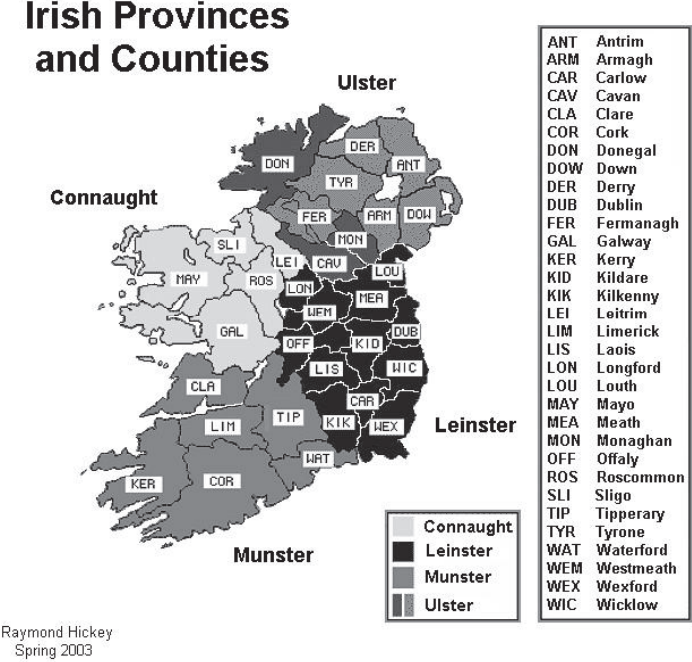


 Grammar
Grammar
 Tenses
Tenses
 Present
Present
 Past
Past
 Future
Future
 Parts Of Speech
Parts Of Speech
 Nouns
Nouns
 Verbs
Verbs
 Adverbs
Adverbs
 Adjectives
Adjectives
 Pronouns
Pronouns
 Pre Position
Pre Position
 Preposition by function
Preposition by function 
 Preposition by construction
Preposition by construction
 Conjunctions
Conjunctions
 Interjections
Interjections
 Grammar Rules
Grammar Rules
 Linguistics
Linguistics
 Semantics
Semantics
 Pragmatics
Pragmatics
 Reading Comprehension
Reading Comprehension|
Read More
Date: 2023-08-09
Date: 2024-03-11
Date: 2024-03-13
|
Comments The south of Ireland can be divided into two broad dialect regions. The first and oldest is the east coast dialect area which stretches from Waterford up to beyond Dublin, probably as far as Dundalk in its original extension before 1600.
The second area is that of the south-west and west and is the part of the country which was latest to engage in the language shift from Irish to English. Indeed for a few small pockets on the western seaboard, in Kerry, Connemara and Donegal, the Irish language has not died out yet.
In the centre and north-central part of the country there is a diffuse and dialectally indeterminate Midlands region which extends from southern Offaly and Laois up to Cavan and south Leitrim.
Between Sligo in the west and Dundalk in the east there is a broad transitional band which shows a mixture of southern and northern features.
The north of Ireland consists of the counties of Ulster and can be divided into a large central region, that of Mid-Ulster English, and a ‘Coastal Crescent’ run-ning from Co. Down, south-east of Belfast, up to Antrim in the extreme north-east, through Co. Derry and across to the north-east of Donegal (but excluding the city of Derry). This area is that of strongest Scottish settlement and hence it represents Ulster Scots in its most original form (there are also some other smaller areas, such as north Co. Armagh). In the west of Donegal, contact forms of Ulster English are spoken.

|
|
|
|
تفوقت في الاختبار على الجميع.. فاكهة "خارقة" في عالم التغذية
|
|
|
|
|
|
|
أمين عام أوبك: النفط الخام والغاز الطبيعي "هبة من الله"
|
|
|
|
|
|
|
قسم شؤون المعارف ينظم دورة عن آليات عمل الفهارس الفنية للموسوعات والكتب لملاكاته
|
|
|